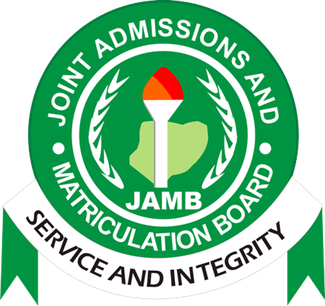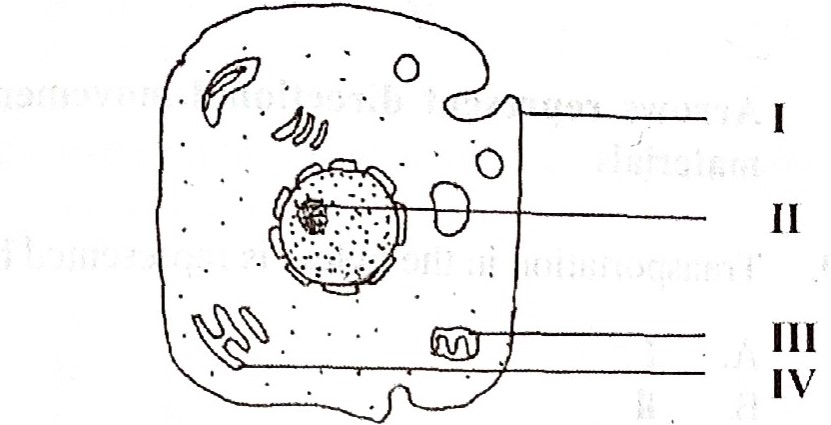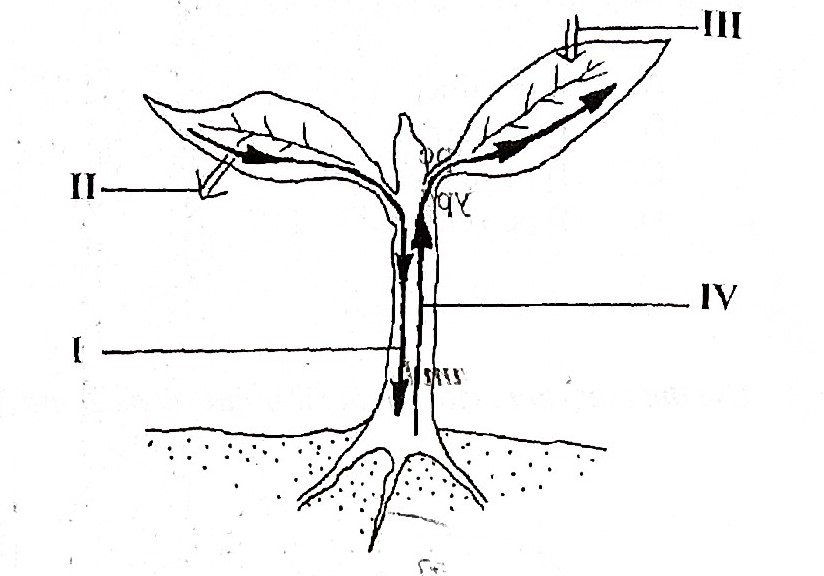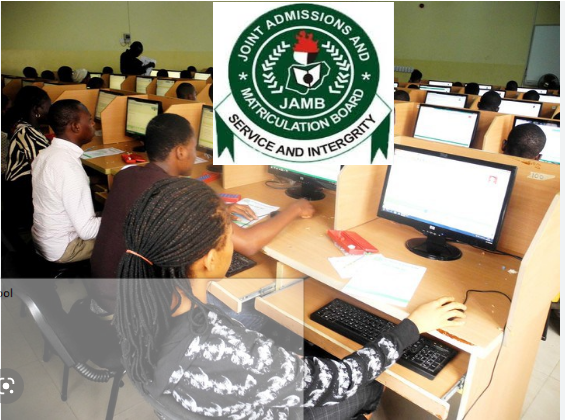This post is specially prepared for candidates of the 2025 Joint Admission and Matriculation Board (JAMB) Examination. If you know that you belong to this category of persons, make sure that you take every information contained here very serious.
The JAMB Biology Questions and Answers for the 2025 examination is out online only on this website.

A lot of the candidates who are interested in the 2025 JAMB Registration and those who have completed their registration have been searching very hard to see the complete JAMB Biology questions and answers for this year. This is especially for those who want study Science-related courses like Biological Sciences.
For this reason, I have decided to go extra mile to ensure that I get the correct questions and answers for the examination. This article is all about the questions and their respective answers well supplied. I am also going to give you some basic tips that you would require to excel in the 2024 JAMB examination.
If you would like to score 100% in Biology in the forthcoming examination, please do yourself good by reading this article carefully to the end.
Complete JAMB Biology Questions for Day One 2025
The following are the compilation of the 2025 JAMB questions:
1. Homologous pairs of chromosomes separate during
A. meiosis
B. cytolysis
C. mitosis
D. cleavage
Use the diagram below to answer questions 2 and 3.

2. The organelle responsible for heredity is labelled
A. I
B. II
C. III
D. IV
3. The part labelled IV is the
A. mitochondrion
B. cell wall
C. endoplasmic reticulum
D. nucleus
4. Which of the following is most advanced in the evolutionary trend of animals?
A. Liverfluke
B. Earthworm
C Snail
D. Cockroach
5. Which of the following is the lowest category of classification?
A. Class.
B. Species
C. Family
D. Genus.
6. Plants that show secondary growth are usually found among the
A. thallophytes
B. pteridophytes
C. monocotyledons
D. dicotyledons
7. Fungi are a distinct group of eukaryotes mainly yes because they have
A. spores
B. no chlorophyll
C. many fruiting bodies
D. sexual and asexual reproduction
8. An arthropod that is destructive at the early stage of its life cycle is
A. butterfly
B. mosquito
C. bee
D. millepede
9. An animal body that can be cut along its axis in any plane to give two identical parts is said to be
A. radially symmetrical
B. bilaterally symmetrical
C. asymmetrical
D. symmetrical
10. Which of the following possesses mammary gland?
A. Dogfish.
B. Whale.
C. Shark.
D. Catfish.
11. The feature that links birds to reptiles in evolution is the possession of
A. feathers
B. beak
C. skeleton
D. scales.
12. Countershading is an adaptive feature that enables animals to
A. fight enemies
B. remain undetected
C. warn enemies
D. attract mates
13. Which of the following plant structures lacks a waterproof cuticle?
A. Leaf.
B. Stem
C. Root
D. Shoot.
See Also:
JAMB Government Questions And Answers 2025
JAMB Economics Questions And Answers 2025
JAMB Mathematics Questions And Answers 2025
JAMB English Questions And Answers 2025
14. In the mammalian male reproductive system, the part that serves as a passage for both urine and semen is the
A. urethra
B. Ureter
C. bladder
D. seminal vesicle
15. In plants, which of the following is required in minute quantities for growth?
A. Copper.
B. Potassium
C. Phosphorus
D. Sodium
16. Which of the following organisms is both parasitic and autotrophic?
A. Sundew
B. Loranthus
C. Rhizopus
D. Tapeworm
17. A function of the hydrochloric acid produced in the human stomach during digestion is to
A. neutralise the effect of bile
B. coagulate milk protein and emulsify fats
C. stop the action of ptyalin
D. break up food into smaller particles
18. Which of the following is a polysaccharide?
A. Glucose.
B. Sucrose.
C. Maltose
D. Cellulose
Use the diagram below to answer questions 19 and 20.

Arrows represent directional movement of Materials
19. Transportation in the xylem is represented by
A. I
B. II
C. III
D. IV
20. The arrow labelled II represents the
A. release of oxygen
B. intake of carbon (IV) oxide
C. movement of photosynthates
D. movement of nutrients
21. In the kidney of mammals, the site of ultrafiltration is the
A. uriniferous tubule
B. Bowman’s capsule
C. loop of Henle
D. renal tubule
22. Which of the following is involved in secondary thickening in plants?
A. Collenchyma and xylem cells.
B. Vascular cambium and collenchyma cells.
C. Vascular cambium and cork cambium.
D. Cork cambium and sclerenchyma
23. An example of a fruit that develops from a single carpel is
A. okro
B. tomato
C. bean
D. orange
Use the diagram below to answer questions 24 and 25.

24. The developing embryo is usually contained in the part labelled
A. IV
B. III
C. II
D. I
25. The function of the part labelled III is to
A. produce egg cells
B. protect sperms during fertilization
C. secrete hormones during coitus
D. protect the developing embryo.
26. Plant growth can be artificially stimulated by the addition of
A. gibberellin
B. kinin
C. abscisic acid
D. ethylene.
27. The autonomic nervous system consists of neurons that control the
A. voluntary muscles
B. heart beat
C. tongue
D. hands
28. Plants of temperate origin can be grown in tropical areas in the vegetation zones of the
A. rain forest
B. Guinea savanna
C. Sudan savanna
D. montane forest.
29. The water cycle is maintained mainly by
A. evaporation of water in the environment
B. evaporation and condensation of water in the environment
C. condensation of water in the environment
D. transpiration and respiration in plants.
30. Organisms living in an estuarine habitat are adapted to
A. withstand wide fluctuations in temperature
B. survive only in water with low salinity
C. withstand wide fluctuations in salinity
D. feed only on phytoplankton and dead organic matter
31. The presence of stilt roots, pneumatophores, sunken stomata and salt glands are adaptive features of plants found in the
A. tropical rainforest
B. mangrove swamps
C. grassland
D. montane forest
32. Which of the following animals can exist solely on the water they get from food and metabolic reactions?
A. Forest arboreal dwellers
B. Desert dwellers
C. Forest ground dwellers.
D. Rainforest dwellers
33. The most likely first colonizers of a bare rock are
A. mosses
B. ferns
C. lichen
D. fungi
34. The carrying capacity of a habitat is reached when the population growth begins to
A. increase slowly
B. increase exponentially
C. slow down
D. remain steady.
35. The abiotic factors that control human population include
A. disease and famine
B. space and rainfall
C. flooding and earthquake
D. temperature and disease
36. An indigenous method of renewing and maintaining soil fertility is by
A. clearing farms by burning
B. planting one crop type
C. adding inorganic fertilizers yearly
D. crop rotation and shifting cultivation
37. The diseases caused by water-borne pathogens include
A. gonorrhoea and poliomyelitis
B. typhoid and syphilis
C. tuberculosis and cholera
D. typhoid and cholera
Use the diagram below to answer questions 38 and 39.

38. The graph illustrates
A. the highest frequency for height of 2 metres
B. a discontinuously varying character
C. a continuously varying character
D. total yield in a cassava farm
39. The largest number of cassava plants has an approximate height of
A. 1.4m
B. 1.6m
C. 1.8m
D. 2.0m
40. Which of the following is true in blood transfusion?
A. A person of blood group AB can donate blood only to another person of blood group AB
B. Persons of blood groups A and B can donate or receive blood from each other,
C. A person of blood group AB can receive blood only from persons of blood group A or B.
D. A person of blood group O can donate only to a person of blood group O
41. A yellow maize is planted and all the fruits obtained are of yellow seeds. When they are cross-bred, yellow seeds and white seeds are obtained in a ratio 3: 1. The yellow seed is said to be
A. non-heritable
B. sex-linked
C. a recessive trait
D. a dominant trait
42. When a colour-blind man marries a carrier woman. What is the probability of their offspring being colour blind?
A. 25%
B. 50%
C. 75%
D. 100%
43. The correct base pairing for DNA is
A. adenine→ thymine and guanine → cytosine
B. adenine → guanine and thymine → cytosine
C. adenine cytosine and guanine-> thymine
D. adenine→ adenine and cytosine → cytosine
Use the diagram below to answer questions 44 and 45.

44. The type of interaction shown is referred to as
A. interspecific competition intraspecific
B. intraspecific competition
C. mutualism
D. cooperation
45. Which of the following statements is true of the interraction?
A. P. aurelia is better adapted for obtaining food than P. caudatum.
B. P. caudatum is better adapted for obtaining food than P. aurelia.
C. Both organisms cannot coexist.
D. Both organisms cannot reproduce.
46. The short thick beak in birds is an adaptation for
A. crushing seeds
B. sucking nectar
C. tearing flesh
D. straining mud
47. The basking of Agama lizards in the sun is to
A. change the colour of their body
B. raise their body temperature to become active
C. fight to defend their territories
D. attract the female for courtship
48. The significance of a very large number of termites involved in nuptial swarming is to
A. provide birds with plenty of food
B. ensure their perpetuation despite predatory pressure
C. search for a favourable place to breed
D. ensure that every individual gets a mate
49. The use and disuse of body parts and the inheritance of acquired traits were used to explain
A. Darwin’s theory
B. Lamarck’s theory
C. genetic drift
D. gene flow.
50. From his study of Galapagos finches, Darwin derived his theory of evolution from
A. comparative anatomy
B. comparative physiology
C. fossil remains
D. comparative embryology
Related Posts
JAMB Chemistry Questions And Answers For 2025 | Day 1, 2, 3 & 4
JAMB Physics Questions For Day One 2025 | UTME CBT Questions And Answers
JAMB Biology Answers
Now that you have seen the complete JAMB Biology questions for 2025, it is time to help you out with the solutions to all the questions. The table below presents the answers to all the JAMB Biology questions:
| 1 | A | 11 | D | 21 | B | 31 | B | 41 | D |
| 2 | B | 12 | B | 22 | D | 32 | B | 42 | B |
| 3 | C | 13 | C | 23 | A | 33 | A | 43 | A |
| 4 | D | 14 | A | 24 | C | 34 | D | 44 | A |
| 5 | A | 15 | D | 25 | A | 35 | D | 45 | B |
| 6 | D | 16 | A | 26 | D | 36 | D | 46 | A |
| 7 | D | 17 | A | 27 | B | 37 | D | 47 | D |
| 8 | A | 18 | D | 28 | B | 38 | C | 48 | B |
| 9 | B | 19 | A | 29 | B | 39 | B | 49 | B |
| 10 | B | 20 | B | 30 | C | 40 | A | 50 | B |
Major Topics To Read In Biology For JAMB
I guess that whoever that is reading this article is one the candidates of the 2025 JAMB Examination. In this section of the article, I am going to show you important topics that you must read in Biology as you are still preparing for the examination.
The following are important areas where most of the JAMB Biology questions are usually taken from:
- Characteristics of Living Organisms
- Cell
- Plant and Animal Classifications
- Respiration and Energy Transformation/Release
- Transport System in plant and animal
- Nutrition
- Excretory Systems in plant and animal
- Movement and Support in Organisms
- Coordination and Control
- Reproduction
- Ecology
- Growth
- Genetics
The listed topics are the most important topics that you must consider first while you are still reading for JAMB examination. If you are able cover these topics very well, your high score in Biology is surely guaranteed in JAMB 2025.
Recommended Posts
How To Answer JAMB Biology Questions
Obviously, a lot of persons have written Biology in JAMB/UTME so many times and still there are unable to get a satisfactory score in any of those years. Some of these persons have complained so much that they don’t even know what to do again as regards passing the examination.
If you are among those who have written JAMB one or two times and you are about to write again this year, just be excited for solutions to all you problems are finally here. In case you are about to write JAMB for the first time, you are very lucky to have met this article on time. I assure you that if you can apply all the principles that I am about to reveal to you here, you are not going to repeat JAMB again in your life.
The most reliable principles to use to answers JAMB Biology and get excellent score are as shown below:
Follow JAMB Syllabus
It is very important above every other thing that as you prepare for your JAMB examination, you must follow and ensure that you complete the JAMB biology syllabus before the date of the examination.
This is where some candidates get things wrong. You don’t have to continue reading only things that you have good knowledge about in biology. It is important that you use the JAMB syllabus while reading to know if there are any added topics that you have not covered yet.
This is also helpful tool as it will keep you in check while you are reading for the examination, to make maintain expected reading track.
Use Recommended Texts
While you read and make constant reference to the JAMB syllabus, you will find out that there some recommended textbooks by the Joint Admission and Matriculation Board (JAMB). Do well to get those textbooks and read from them.
It is not that you are not going to read any other biology textbooks for wider and in-depth knowledge. But it is expected that you prioritize the recommended biology texts while preparing for the examination before consulting all other ones.
Most times, JAMB Biology questions come from those recommended texts in exact terminology used that could be different from other biology textbooks but with the same meaning. In this case, you might get the question wrong if you are familiar with such. It is important to use the recommended texts to avoid any king of confusion.
Consult Past Questions
Authentic Biology Past Questions and Answers is great and helpful tool while preparing for JAMB examination the same way WAEC Biology Past Questions have been helpful to WAEC candidates. It has been tested and trusted by most renowned successful JAMB candidates.
Using the JAMB Syllabus and the Recommended Texts are not enough to give you 100% success in JAMB without the use of Past Questions and Answers. With the past questions, you prepare like you are in the examination hall already. It equips the candidate with the required courage to face examination proper.
While making use of the past questions, the impact of examination tension is gradually cushioned with confidence because the JAMB examination could differ from the past questions in terms of questions but the format of JAMB biology questions remains the same.
Other Principles
If you have engaged all the above listed practices, you also have to reinforce them with the following principles:
- Manage your time well
- Follow the given instructions
- Start from the easiest question to the more difficult ones.
- Master and make good use of the computer shortcut keys
- Answer all the questions correctly
- Do not cheat in the exam hall
- MAKES SURE that you SUBMIT your exam when you finish.
With all these helpful guidelines, I am hopeful that you are going to get 100% in your examination this year. if you have any other inquiries about the JAMB Biology Questions and Answers 2025, kindly make use of the comment section on this page.
Do well to share this article to your colleagues via any of the buttons below.

